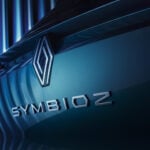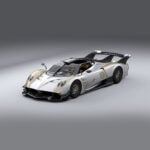VW, Skoda, Honda access swarm technology to prevent accidents, avoid traffic jams and get closer to fully autonomous driving.
Volkswagen, Skoda and Honda are among the brands that use or test swarm technology to provide even excellent driver assistance capabilities. The solution is such a key step towards providing high-level autonomy that a director at Robert Bosch predicts that swarm technology will be used by almost all manufacturers by 2027.
How does it work?
Swarm technology uses crowdsourcing – in this case, data from many machines, called “swarms” – to generate real-time data for accurate location.
With the swarm technology, cars and trucks will be able to communicate with each other, emergency vehicles and even with the connected infrastructure along the roads.
Using swarm technology, carmakers will be able to make lane changes more efficiently, as well as receive information from other vehicle groups that could help plan more efficient routes or alert drivers to dangerous driving conditions.
Targeted applications for swimming technology are assisted and automatic driving functions, which include features such as adaptive cruise control, lane keeping and lane change assistance systems, and hands-free and piloted driving.
Skoda has started using swarm connectivity in its vehicle to alert drivers of future problems on their routes.
Meanwhile, Honda has developed Safe Swarm technology, which uses vehicle-to-everything (V2X) technology to allow vehicles to communicate with surrounding infrastructure and vehicles to share key information, such as location and speed.
The first step towards total autonomy
Volkswagen recently introduced an optional feature called Travel Assist with Swarm Data, which offers partial self-driving as part of the software update 3.0 for its all-electric vehicle ID range.
By using sensors to monitor the surrounding traffic, the vehicle can provide a more accurate lane centering, while maintaining a set distance from the vehicle in front.
Hans-Joerg Mathony, Bosch’s director of product management mapping services, is optimistic about the technology. He expects swarm technology to be used by almost all manufacturers by 2027.
One of the key features of the solution is that it provides near real-time map information for all roads.
“Compared to traditional survey-based mapping technology, swarm technology allows for a much higher frequency of map updates,” he said. “In addition, it provides data on fleet behavior, such as typical driving routes, driving speeds and stopping points, allowing for more convenient assisted and automatic driving.”
He said the GPS swarm data will allow for dynamic adaptation of driving routes.
“This information could be used to more accurately calculate the most likely pathways,” he said. “If there are two or more alternative routes and data on road conditions and road hazards are available, navigation may suggest the best route for the driver.”

 Renault’s compact family SUV will be called the Symbioz -.
Renault’s compact family SUV will be called the Symbioz -. Peugeot and its new range of salt and pepper mills -.
Peugeot and its new range of salt and pepper mills -. A new Uber Eats ad is being criticized for showing a peanut allergy -.
A new Uber Eats ad is being criticized for showing a peanut allergy -. Pagani announces new track-based hypercar, known as the Huayra R Evo -.
Pagani announces new track-based hypercar, known as the Huayra R Evo -. Introducing the Oscars in the Best Casting category -.
Introducing the Oscars in the Best Casting category -.